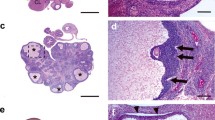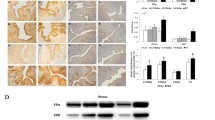Abstract.
To investigate the influence of phyotestrogens in the diet, an immature uterotrophic assay of ethinylestradiol, bisphenol A, 4-nonylphenol or genistein was performed in rats given the formula MF diet, modified NIH-07 open formula diet, or modified NIH-07 phytoestrogen-lowered-diet (study 1). The chemicals were administered subcutaneously from 20 days of age for 3 days. Doses of ethinylestradiol, bisphenol A, 4-nonylphenol or genistein were 0.06–0.6 µg/kg per day, 1–10 mg/kg per day, 10–100 mg/kg per day or 1–20 mg/kg per day, respectively. In another study, an immature uterotrophic assay of genistein and ethinylestradiol together with ICI 182,780 or antide was performed to compare the ovarian changes with these chemicals (study 2). Doses of genistein or ethinylestradiol were 30 mg/kg per day or 0.6 µg/kg per day, respectively, and these chemicals were injected subcutaneously from 20 days of age for 3 days. In study 1, there were no essential differences in the uterus weights among the various phytoestrogen-content diets. In study 2, the ovary weights in rats given genistein were significantly higher than in the controls, whereas the ovary weights in rats given ethinylestradiol were lower than in the controls. The ovary weights in the ICI 182,780 plus genistein group were significantly higher than in the genistein group, but decrease of the ovary weights was detected in the antide plus genistein group. There was no significant difference in ovary weights between the ICI 182,780 plus ethinylestradiol group and the ethinylestradiol group, but decrease of ovary weights was detected in antide plus ethinylestradiol group. In a histological examination of the ovary, fluid-filled follicles in the genistein group were more numerous than in other groups and increase of granulosa cell fragmentation was seen in the ethinylestradiol and other groups with the exception of the genistein group. The present findings demonstrate that the sensitivity of the immature rat uterotrophic assay is not influenced by the relatively low level of phytoestrogen in diets and that the ovarian changes occurring with genistein and ethinylestradiol are different.
Similar content being viewed by others
Author information
Authors and Affiliations
Additional information
Electronic Publication
Rights and permissions
About this article
Cite this article
Yamasaki, K., Sawaki, M., Noda, S. et al. Immature uterotrophic assay of estrogenic compounds in rats given diets of different phytoestrogen content and the ovarian changes with ICI 182,780 or antide. Arch Toxicol 76, 613–620 (2002). https://doi.org/10.1007/s00204-002-0383-1
Received:
Accepted:
Issue Date:
DOI: https://doi.org/10.1007/s00204-002-0383-1




